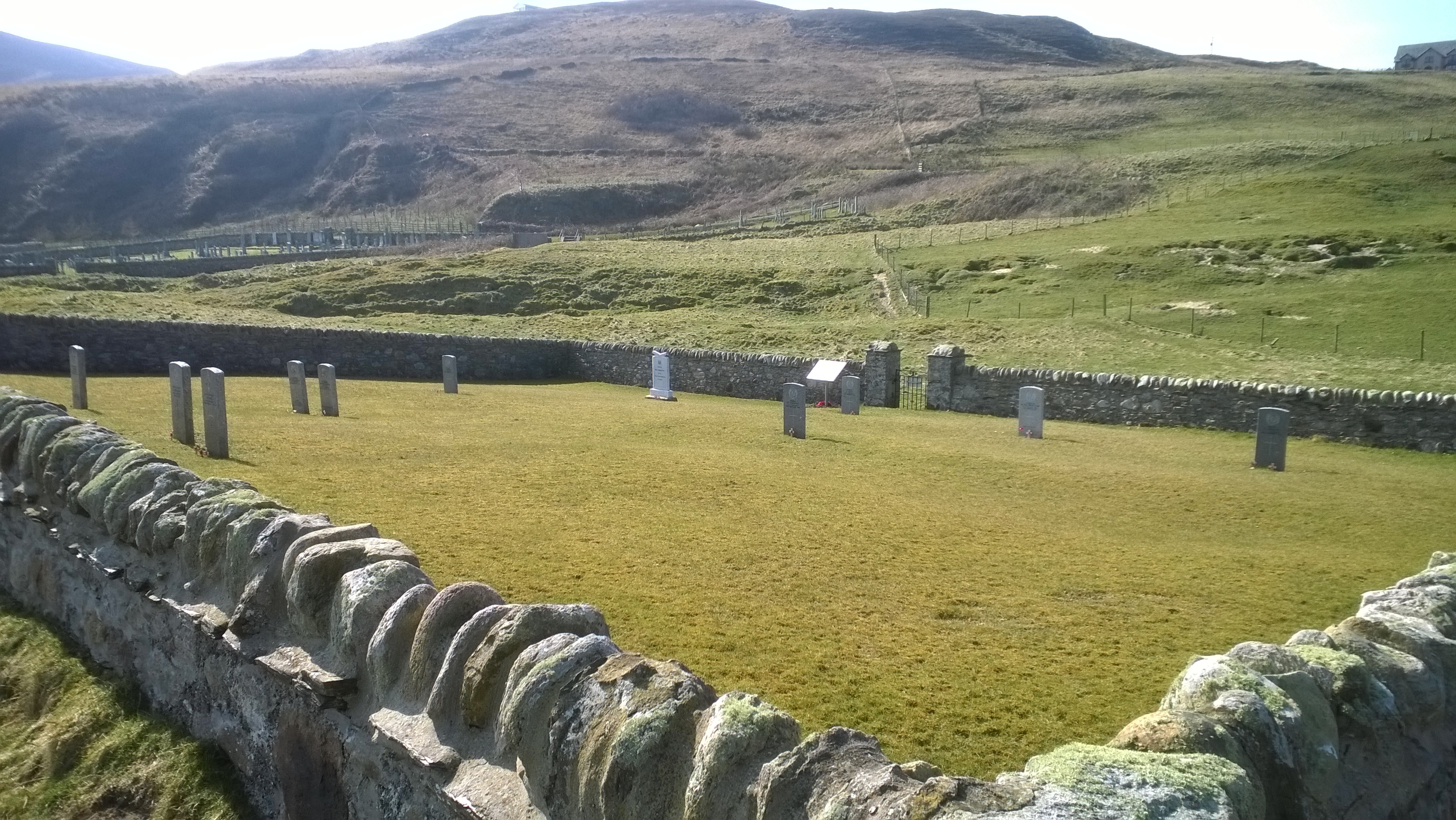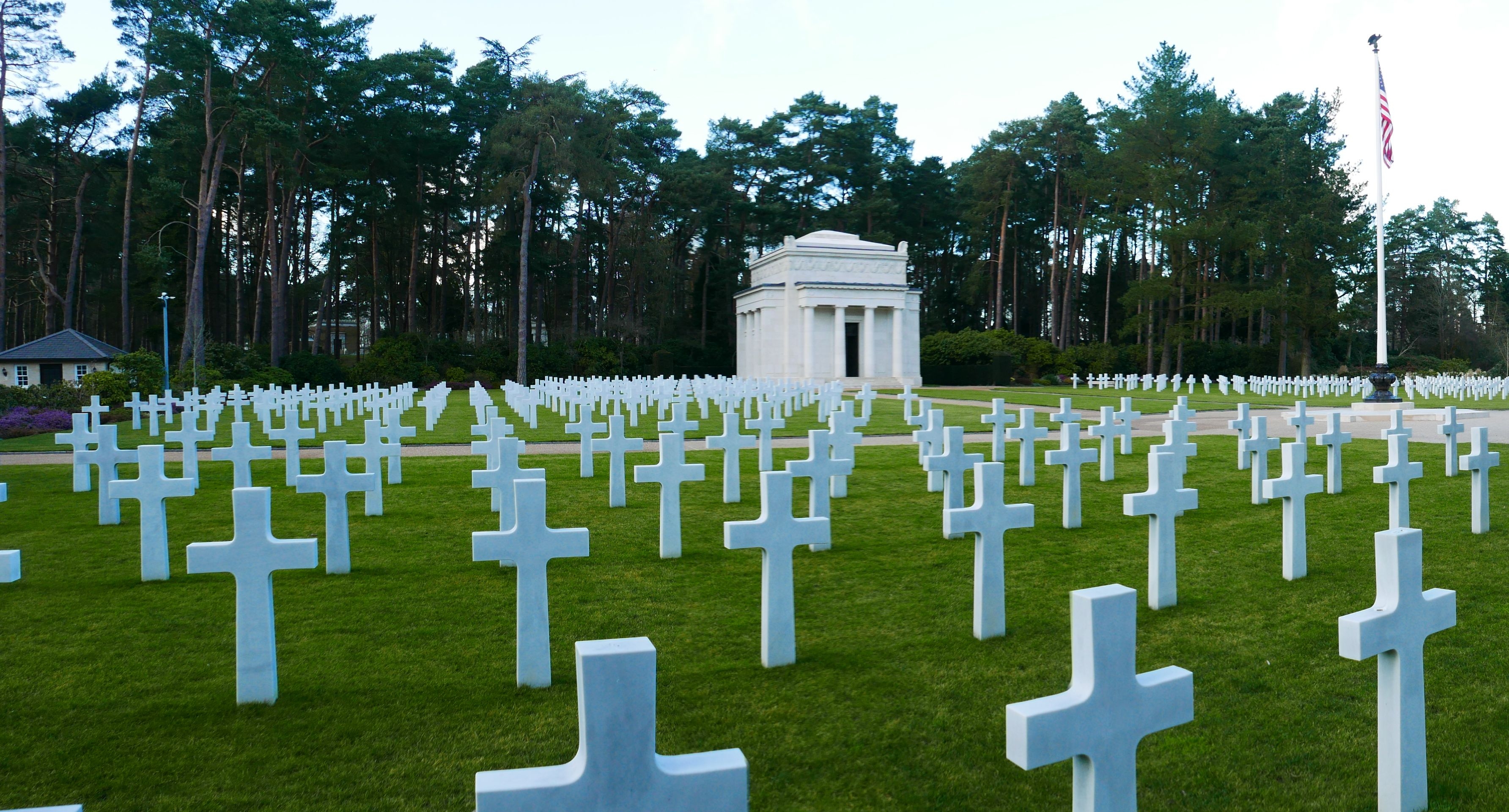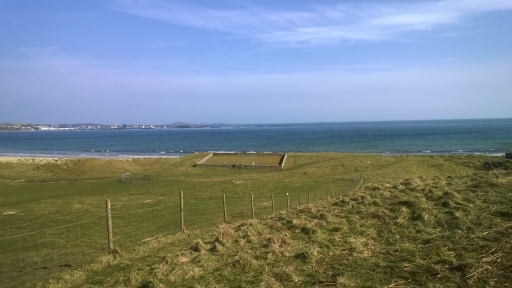On the night of 5 February 1918 the liner Tuscania, carrying over 2,000 US serviceman bound for Europe, was torpedoed off the coast of Northern Ireland. In the confusion which followed some 210 men perished, many of them swept to their deaths on the jagged coastline of Islay 20 miles away in western Scotland. As Patrick Gregory explains, it was one of the biggest disasters to befall the United States in its transport of service personnel in WWI.
A lighthouse-like monument overlooks the coastline where many of the American serviceman met their deaths that night. The small craft they had used to escape the stricken Tuscania were themselves wrecked, dashed onto the rocks below. The American Monument which looks down on those rocks today is a memorial, perched high on the cliffs on the edge of the Oa Peninsula. It was erected in 1920 by the American Red Cross in memory of these men as well as the victims of a second tragedy later in 1918, when the troopship HMS Otranto foundered nearby.
The Tuscania had only been in service for three years, chartered from its owners Anchor Line by Cunard to run the transatlantic route between New York and Britain. It first began ferrying troops in September 1916, carrying Canadian soldiers from Halifax, Nova Scotia to Liverpool. In August of the following year the liner began the first of three successful runs carrying American personnel; and then came its final voyage.
Convoy
Tuscania began that final trip on 24 January 1918, leaving Hoboken, New Jersey for the port of Le Havre in France. On board the vessel, captained by Peter McLean, a veteran seaman from Glasgow, were 2,400-odd troops and crew: among them the 100th, 158th and 213th Aero Squadrons; forestry engineers; Service of Supply troops; military police; and replacement detachments for the 32nd Division. The ship joined the thirteen-strong Convoy HX-20 out of Nova Scotia en route to Europe.
Around 5.40 pm, as hundreds of those on board sat down to their evening meal, the ship was in the sights of German U-boat UB-77, seven miles off Rathlin Island. Wilhelm Meyer, the submarine’s commander, gave the order to fire. The first torpedo missed. But a second didn’t, scoring a direct hit on the Tuscania’s starboard side. About 20 sailors were killed instantly.
 SS Tuscania’s dead were initially laid to rest at Kilnaughton Military Cemetery on Islay. All but one of the Americans were later reburied elsewhere. Four British crewmen from the ship still lie here, together with the lone US soldier, Private Roy Muncaster. The Commonwealth War Graves Commission cares for their graves (Photo © CWGC)
SS Tuscania’s dead were initially laid to rest at Kilnaughton Military Cemetery on Islay. All but one of the Americans were later reburied elsewhere. Four British crewmen from the ship still lie here, together with the lone US soldier, Private Roy Muncaster. The Commonwealth War Graves Commission cares for their graves (Photo © CWGC)
It took some time before the first lifeboat could be launched from the listing ship but those on board knew that they might stand a better chance in one of these small craft than flinging themselves into the dark and dangerous waters. Three of the escorting destroyers in the convoy searched the area for survivors and hunting the enemy U-boat. Around 800 passengers and crew were picked up by the destroyer Pigeon.
In time, the destroyers brought 1,350 into the Northern Irish port of Londonderry and to Larne another 550. A couple of lifeboats also made their way there, but the others were headed north towards Islay and an uncertain fate. One lifeboat managed to navigate around the Oa peninsula to the safety of Port Ellen, the island’s largest town. Another made landfall a little further up the peninsula on the western side. A total of 132 found safety. But the others were to perish on the dark rocks at the peninsula’s tip.
Calls for help were answered by islanders who scoured the area on land and sea looking for survivors. Those they found they took into their homes, with search parties continuing through the night. But morning brought a scene of devastation. Dead bodies and wreckage littered the rocks, some corpses floating in the sea and others still being washed ashore further north in Loch Indaal.

Brookwood American Cemetery, Surrey – soldiers from the Tuscania were either reburied here or repatriated to the United States (Photo: Centenary News)
Not all the 210 who died that night were found but the temporary cemeteries that were established around on the island eventually accounted for 182 of those on board. Later, the American Cemetery at Brookwood, near Woking in Southern England, would be established as the lasting resting place for most of these and other fallen American military personnel of the war. But the island has never forgotten that night or the one which followed in October 1918 with the loss of the Otranto.
The American Monument and Kilnaughton CWGC Cemetery have been the focus for today’s centenary commemorations on Islay remembering the Tuscania and the islanders’ role in the rescue effort. Islay will also be hosting one of Scotland’s main World War 1 remembrance events in May 2018 as part of the wider WW100 Scotland commemorations. More information here. Islay and neighbouring Jura lost over 200 of their own men in the Great War.
Patrick Gregory is co-author with Elizabeth Nurser of ‘An American on the Western Front: The First World War Letters of Arthur Clifford Kimber 1917-18’ (The History Press) American on the Western Front @AmericanOnTheWF
Images courtesy of the Commonwealth War Graves Commission – CWGC (Kilnaughton); Centenary News (Brookwood)
